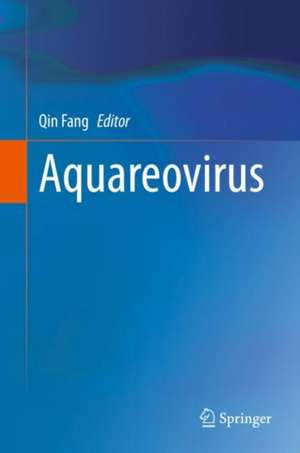Aquareovirus
Editat de Qin Fangen Limba Engleză Hardback – 9 iul 2021
| Toate formatele și edițiile | Preț | Express |
|---|---|---|
| Paperback (1) | 1100.95 lei 38-44 zile | |
| Springer Nature Singapore – 9 iul 2022 | 1100.95 lei 38-44 zile | |
| Hardback (1) | 1288.63 lei 3-5 săpt. | |
| Springer Nature Singapore – 9 iul 2021 | 1288.63 lei 3-5 săpt. |
Preț: 1288.63 lei
Preț vechi: 1356.45 lei
-5% Nou
Puncte Express: 1933
Preț estimativ în valută:
246.57€ • 257.47$ • 203.61£
246.57€ • 257.47$ • 203.61£
Carte disponibilă
Livrare economică 25 martie-08 aprilie
Preluare comenzi: 021 569.72.76
Specificații
ISBN-13: 9789811619021
ISBN-10: 9811619026
Pagini: 235
Ilustrații: XII, 235 p. 40 illus., 29 illus. in color.
Dimensiuni: 155 x 235 mm
Greutate: 0.54 kg
Ediția:1st ed. 2021
Editura: Springer Nature Singapore
Colecția Springer
Locul publicării:Singapore, Singapore
ISBN-10: 9811619026
Pagini: 235
Ilustrații: XII, 235 p. 40 illus., 29 illus. in color.
Dimensiuni: 155 x 235 mm
Greutate: 0.54 kg
Ediția:1st ed. 2021
Editura: Springer Nature Singapore
Colecția Springer
Locul publicării:Singapore, Singapore
Cuprins
1 Aquareovirus: An Overview 2 Molecular Biology of Aquareoviruses 3 The Aquareovirus Particle Structure and Protein Functions 4 The Aquareovirus Infection and Replication 5 Epidemiology of the Grass Carp Reovirus 6 Clinical Features and Diagnosis of Aquareovirus Infection 7 Prevention and Control of Grass Carp Hemorrhagic Disease 8 Medical Treatment of Grass Carp Hemorrhagic Disease 9 Anti-aquareovirus Immunity
Notă biografică
Dr. Qin Fang is a professor from Department of Molecular Virology, Wuhan Institute of Virology, CAS, China. Her research focuses on the biology of reoviridae. She has published more than 50 research articles in this field.
Textul de pe ultima copertă
Aquareoviruses cause infection in bony fish and shellfish and thus, constitute a significant threat to aquaculture industries worldwide. Aquareoviruses, belonging to the family Reoviridae, have genomes consisting of 11 segments of double-stranded RNA contained within a core (T = 1) surrounded by a double-layered icosahedral capsid with a T = 13 symmetry in general. These viruses not only physically resemble mammalian orthoreoviruses, but also show the highest amino acid identity. More than hundred aquareoviruses have been isolated from both saline water and freshwater origins; however, literary sources elucidating aquareovirus biology are very limited. Given the increasing pace of discovery, it is imperative to make a clear, systematic filing of key aspects of aquareoviruses. Therefore, the aim of writing this book is to provide insights into the molecular mechanisms of evolution, pathogenesis, and host response in aquareovirus infection. This book offers a state-of-the-art report on recent discoveries concerning the aquareovirus genome evolution, gene encoded protein functions, and pathogenesis by comparison with its sister genus Orthoreovirus, including avian and mammalian reoviruses. It mainly focuses on advances made over the past 30 years in research on the general and molecular biology, protein structure and function, infection and replication, epidemiology and diagnosis, immunological prevention and medical treatment, and host antiviral immunity against aquareovirus infection. This book will help curious graduate students or interested researchers acquire an overall picture of aquareovirus infection and pathogenesis, as well as yield benefits in fisheries to better prevent and control diseases caused by aquareovirus infection.
Caracteristici
Providing with an overall picture of aquareovirus infection and pathogenesis
Focusing on advances made over the past 30 years on molecular and cellular properties of aquareovirus and mechanisms of its infection
Offering benefits for fishery to better prevent and control the disease caused by aquareovirus
Focusing on advances made over the past 30 years on molecular and cellular properties of aquareovirus and mechanisms of its infection
Offering benefits for fishery to better prevent and control the disease caused by aquareovirus
